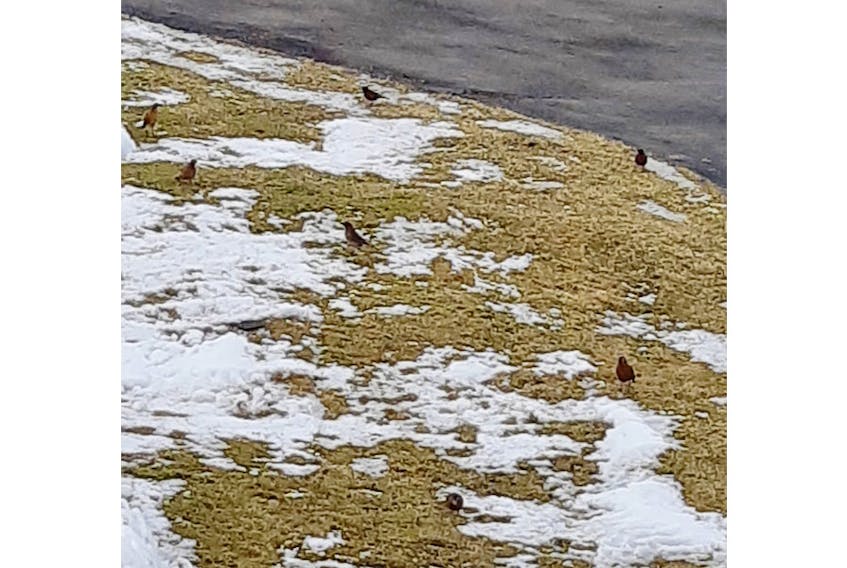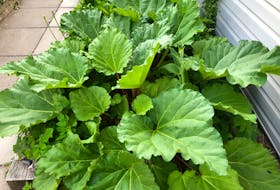On Monday, Rhonda Macdonald posted this lovely photo of a flock of robins in her yard. She was wondering if winter was over in Little Dover, N.S.
Well Rhonda, contrary to popular belief, it is not. I explained this to Grandma many years ago and she didn’t like it much at all. All her life, Grandma and many others, believed that the sighting of a robin in late winter was a harbinger of spring. Today we know that while some robins do migrate south for the winter, other robins choose to stay year-round, near their breeding areas. Robins are a migratory species, but their migration is far more complicated than simply a shift southward.
Robins are “nomadic,” meaning they wander irregularly. The same individual robin may winter one year in Texas, one year in Florida, and one year in Nova Scotia. So you just never know.
Studies have shown that males are far more likely to remain in the north than females. There are good reasons for that – come spring, the male’s main job is to find and defend a territory.
Robins migrate because the ground freezes, locking them out from their favourite food – earthworms – and because winter weather makes it impossible to find juicy caterpillars and other insect food. Robins switch their diet to fruit in winter.
We don’t see as many robins in the winter because they spend less time in yards. They tend to congregate in large flocks in more rural areas and so we’re much less likely to see them. These robins are most often found in areas where there is some open water and where there are fruit trees. The water and fruit get them through the season.
Did you know?
Robins often move ahead of warm fronts, arriving just before, or along with rainy weather. This means they arrive when earthworms must emerge from their tunnels or drown.
So while a robin sighting is a lovely thing, it’s not necessarily a sign of spring.
- Want more weather information? Visit your weather page.
- Have a weather question, photo or drawing to share with Cindy Day? Email [email protected]
Cindy Day is the chief meteorologist for SaltWire Network









